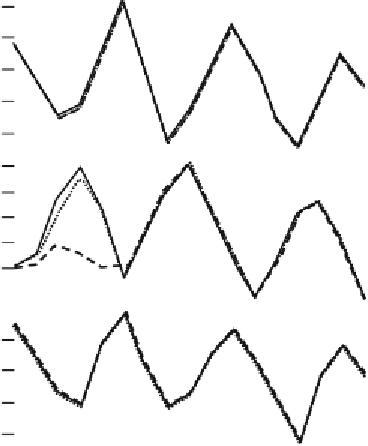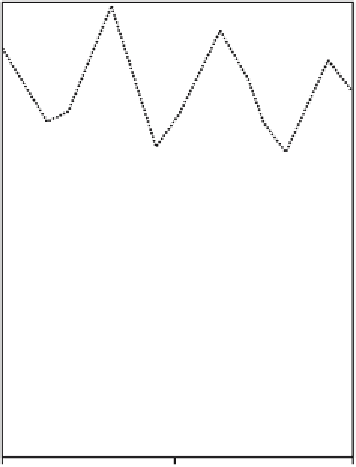Agriculture Reference
In-Depth Information
Fig. 25.9.
Time course of NADP-GPD activity during darkness.
C. rubrum
seedlings germi-
nating in alternating conditions of light intensity and temperature for 4.5 days. Thereafter
constant 20
◦
C, 6,000 lx fluorescent white light for
A
12 h,
B
24 h and
C
36 h followed by
a dark period of varied duration (3-h increments). At the beginning of the dark period the
seedlings received 5 min of red (
solid line
), 5 min of far-red (
dashed line
), or 5 min of far-red
plus 5 min of red (
dotted line
) light (corresponding to a dusk signal in daily light-dark
cycles), in order to modulate the level of active phytochrome. The enzyme activities were
measured at the end of each respective dark period. The rhythmic germination conditions
synchronise the endogenous circadian rhythm to exactly 24 h with an alternation of sko-
tophile and photophile phases. The imposition of darkness after 12 and 36 h of constant
conditions begins at the same phase, while the beginning of darkness after 24 h of constant
conditions is 12 h out of phase with respect to the germination rhythm and to the other
two treatment as is obvious from the semicircadian oscillations of enzyme activity in the
three parts of the figure. The results demonstrate the different sensitivity to phytochrome
amplitude modulation of enzyme activity oscillations depending on the phase of the under-
lying cycle of photophile and skotophile phases. Clearly the endogenous rhythm is gating
the window for phytochrome action (Frosch and Wagner 1973)





















































Search WWH ::

Custom Search